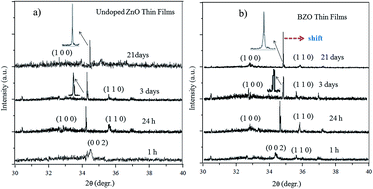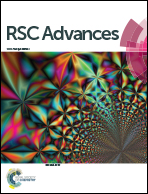Synthesis of sol–gel derived nano-crystalline ZnO thin films as TCO window layer: effect of sol aging and boron
Abstract
The present paper reports synthesized nano-sized ZnO thin films for use as front window electrodes in PV applications, and their behavior after different sol aging times (1 h, 24 h, 3 days and 21 days) for undoped and 1% B amount doping. The highly nanocrystalline ZnO thin films were synthesized by the sol–gel method and B was used as a guest material to examine its role in structural, optical, electrical and morphological properties in this process. X-ray diffraction studies revealed that all the prepared films exhibited the ZnO hexagonal wurtzite structure with preferential orientation along the (0 0 2) crystal plane. Analyses of X-ray diffraction patterns demonstrated that the sol aging can improve the degree of preferred crystal orientation along the c-axis, and it did not change the crystal growth orientation. Average crystallite sizes of the undoped and B doped ZnO films were increased from 16 to 31 nm and from 19 nm to 32 nm with increasing sol aging from 1 h to 21 days. Moreover, AFM results showed that the RMS values increased from 5 nm to 12 nm as an indication of a good film formation on the surface. The minimum value of resistivity was found to be 7.24 × 10−3 Ω m with B and a high optical transmittance of ∼98% in the visible region was observed. The films produced at optimum conditions are suitable for optical and electrical applications owing to their low resistivity, high optical transmittance, optimum band gap, good crystallization and surface formation.


 Please wait while we load your content...
Please wait while we load your content...